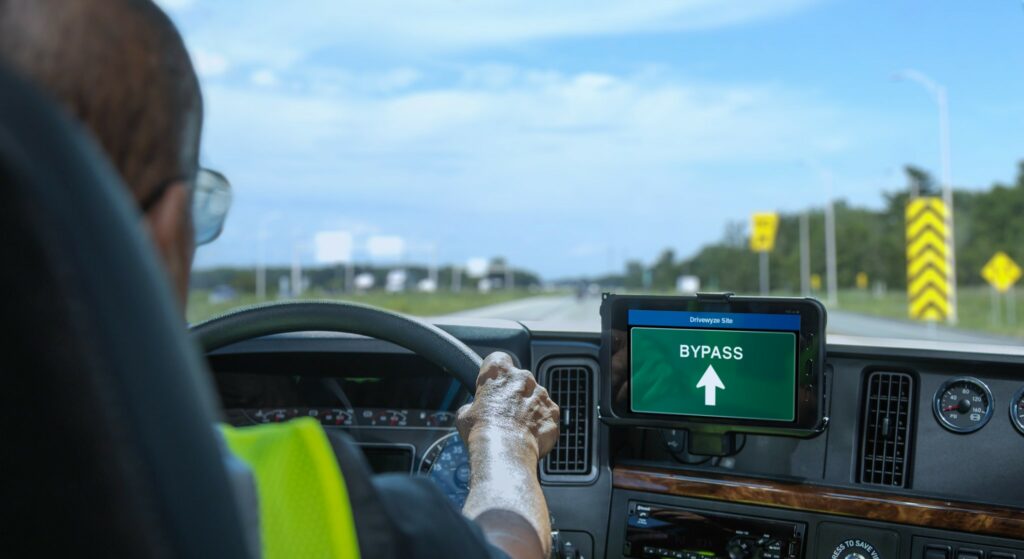Embrace the technology that targets truck inspections
Time is money, and nobody welcomes delays at a roadside scale. Drivers can find themselves breaking into a sweat no matter how confident they are about the state of a truck, its trailer, or the related paperwork. The available time on an ELD continues to tick away, even when sitting in roadside queues.
Such inspections are admittedly a necessary evil. Not everyone is a law-abiding trucker, after all. Some of the equipment captured during various blitzes can leave you shaking your head. Over the years, I’ve seen examples including jerry-rigged “repairs” using all forms of tape, bungee cords, and just about everything short of binder twine. There are the missing fasteners, the cracked metal, you name it.

But for every truck and trailer that displays a clear defect, the vast majority of equipment is fit for duty. Most drivers are eventually waved on through to continue their daily business. Delayed, but back to business.
To compound matters, some trucks are penalized simply because they are exposed to a disproportionate number of roadside scales. Even a typical trip from Vancouver to Calgary could see stops at Hope, Kamloops, and Golden inspection stations. B.C. regulators estimate that each stop takes about 10 minutes per station. This adds up to a potential hour of lost productivity per return trip.
Now picture the drivers who head for back roads and concessions to avoid the watchful gaze of enforcement teams altogether. Or those who have no hope of passing the checks and balances that anchor any pre-clearance program.
Some of the answers can be found in the broader use of technology, giving inspectors the tools to focus more attention on the bad operators within our midst.
Transponders and pre-clearance
Look no further than the transponders that identify pre-screened fleets in many jurisdictions, leaving drivers to continue journeys by the green glow of a dashboard light. In Ontario, for example, 240 carriers and 7,574 vehicles are enrolled in the Drivewyze pre-clearance program.
Businesses that sign up to Weigh2GoBC share information like height, weight and driver credentials as they roll by at highway speeds. And on occasions where members are pulled in for a random inspection, they can be waved on through for the next 24 hours to come.
In Alberta, the Partners in Compliance program identifies pre-screened carriers with a particular commitment to safety. And any provincial carrier that has an excellent, satisfactory, or satisfactory audited safety rating can enroll in the Drivewyze PreClear program.
We are already seeing results from increasingly focused inspections in that province. An astounding 42% of the equipment checked in the province between January 2016 and September 2021 was placed out of service. Another 24% needed attention beyond that. This hardly means that 2/3 of all equipment fails the test. It is simply proof that enforcement officers are focusing more of their attention where it’s needed most.
Thermal imaging and more
Thermal imaging tools, meanwhile, can help inspectors spot a cool wheel end among the warmer components that are braking as they should. The images are not the final word regarding brakes or wheel bearings, but the quick looks can help focus attention on components that don’t seem to be working quite as designed.
In Ontario, smart roadside pre-screening technology continues to be piloted at four inspection stations, checking passing trucks for tire, wheel and brake issues as well as weights. The Ontario Ministry of Transportation confirms there are plans to expand the tech to other locations including a mobile unit.
And now the Commercial Vehicle Safety Alliance (CVSA) is on the threshold of introducing Level 8 inspections – essentially the digital version of a Level 3 inspection that can be conducted while a truck continues to roll. Checks for things including licence status, medical certificates, Hours of Service, USDOT or NSC numbers, operating authorities, out-of-service orders and more could be conducted as wheels continue to roll.
There will always be a role for random inspections, offering insights into broader industry compliance, and highlighting issues that deserve added attention. But with the right tools, enforcement teams would be in a better position to focus attention where it’s most needed.
Governments should give them the resources that will get bad actors off the road but let other truckers get back to work.
Have your say
This is a moderated forum. Comments will no longer be published unless they are accompanied by a first and last name and a verifiable email address. (Today's Trucking will not publish or share the email address.) Profane language and content deemed to be libelous, racist, or threatening in nature will not be published under any circumstances.